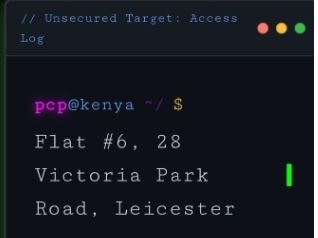
 Environment Cabinet Secretary Dr Deborah Barasa in a past event/Handout
Environment Cabinet Secretary Dr Deborah Barasa in a past event/HandoutThe ongoing plans by the government to degazette large swathes of public forests in the latest bid to resettle squatters have divided the opinion of nature lovers.
On November 4, the National Assembly received a petition from Environment Cabinet Secretary Deborah Barasa seeking parliamentary approval to degazette portions of four public forests to regularise long-standing human settlements.
The ministry in the petition tabled before the House by Speaker Moses Wetang’ula proposes phased de-gazettement of South Nandi, Turbo, Mt Elgon and Kakamega forests.
The targeted areas include South Nandi Forest (Chepkumia Block) – 989.17 hectares (2,444 acres), Turbo Forest (Manzini Block) – 1,241.50 hectares (3,067 acres), Mt Elgon Forest (Chebyuk Settlement Scheme) – 4,647 hectares (11,482 acres) and Kakamega Forest (Shiru and Shaviringa areas) – 94.99 hectares (234 acres) and 36 hectares (88 acres).
The proposed forest areas have been inhabited for decades by communities relocated from public development projects or resettled through government schemes.
Ironically, some of the forests and water towers have been adopted by senior government officials for restoration.
The petition says the process follows extensive reviews by an Inter-Ministerial Committee and the Kenya Forest Service (KFS) Board, which recommended the variation of forest boundaries under Section 34 of the Forest Conservation and Management Act, 2016 (Cap. 385).
“The Cabinet has already approved the variation of these forest boundaries to regularise existing settlements,” read part of the petition. “The ministry now seeks Parliament’s approval to implement this in phases, beginning with four priority areas.”
Wetang’ula has since referred the petition to the Departmental Committee on Environment, Forestry and Mining and the Public Petitions Committee, directing them to expedite their consideration.
“These petitions fall squarely within the jurisdiction of the House. I urge the committees to move swiftly and report their findings for consideration,” Wetang’ula said.
Lawmakers from affected regions welcomed the petition, describing it as a long-awaited step toward restoring dignity and ownership for families who have lived on the contested lands for decades.
For a gazetted forest to be hived off in Kenya, an elaborate procedure has to be followed.
The CS in charge of forests initiates the process by consulting with relevant agencies such as the Kenya Forest Service before issuing public notices for comment.
An Environmental Impact Assessment (EIA) under the Environmental Management and Coordination Act (EMCA), 1999, has to be undertaken before an approval from Parliament is sought and a final degazettement notice is issued.
But even as the petition gets underway, some conservationists see the move as a calculated move to appease voters ahead of the 2027 political duel.
Some warn the move will water down the 15 billion national tree-growing programme, a flagship government climate action agenda.
The Tree Growing initiative is anchored on a 10-year National Landscape and Ecosystem Restoration Strategy that seeks to raise tree cover by 17.8 per cent from the current 12.2 per cent to 30 per cent by 2032.
Government officials and some lawmakers from the affected forests see the petition as a magic bullet to the challenges facing the landless.
Conservation Alliance of Kenya chief executive officer Steve Itela challenged the CS to avail all the petitions seeking to hive off more forest land in the country so that all the sections are degazetted at once instead of doing piecemeal work.
When asked about the possible impact of hiving off such a forest on the government's agenda of growing 15 billion trees, Itela said the initiative targets the growing of trees outside public forest areas.
Itela poured cold water on the 15 billion trees set to be grown, terming it as an exaggeration by state officials.
“When you look at the total public forest cover, it can't even do half of that. The potential for growing the 15 billion trees is outside public forests. That one I can tell you as a fact because we interacted with the strategy and we also realised that the 15 billion was a little bit exaggerated to the president,” he said.
Itela said the planned regularisation of huge forest areas around Kakamega might also be politically motivated.
He warned against allowing the hiving off of forest land to benefit a few who are politically connected to powers that be.
Rhino Ark CEO Christian Lambrechts said he believes the move is the way to go, as the areas set to be hived off have been settled for a long time.
The Pan African Climate Justice Alliance executive director Mithika Mwenda, however, said the move puts Kenya on a dangerous path.
“We are trending on a very dangerous route,” Mwenda said.
Forest Development Secretary with the Ministry of Environment George Tarus said the petition aims to regularise failed land exchange programmes that have been stalled for over 40 years.
“These lands are no longer forests; they were previously designated forests and are now fully settled. The petition's aim is to help affected communities secure land rights through titling. The process will adhere to the procedures specified in section 34 of the Forest Management and Conservation Act, 2016. The public is invited to submit their comments to Parliament,” Tarus said.
Wildlife Conservation Secretary Dr John Chumo said the process is long overdue.
“Most of the areas mentioned in Nandi county are settlements already occupied and needed to have been degazetted a long time ago. Most areas were settled by Kenyans who gave out their land to KFS through a land exchange programme back in the 1980s. The degazettement process will sort out the boundary issues along the affected forests and reduce unnecessary conflicts with the communities,” he said.
Many, however, feel the move will set a bad precedent, as other communities will grab forest land and demand degazettement.
Many say the best way out is for the government to identify alternative land for compensation to those who are affected.
Others query how absolute private property rights extend to public goods like forests.

















